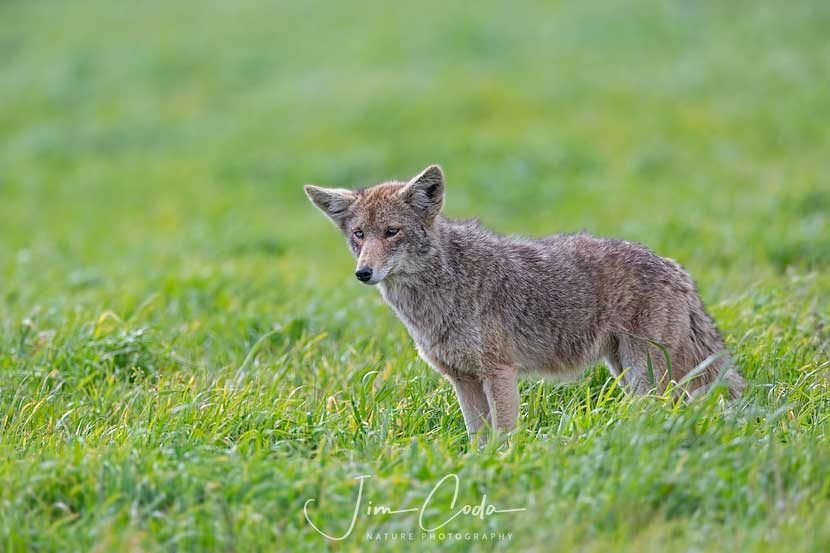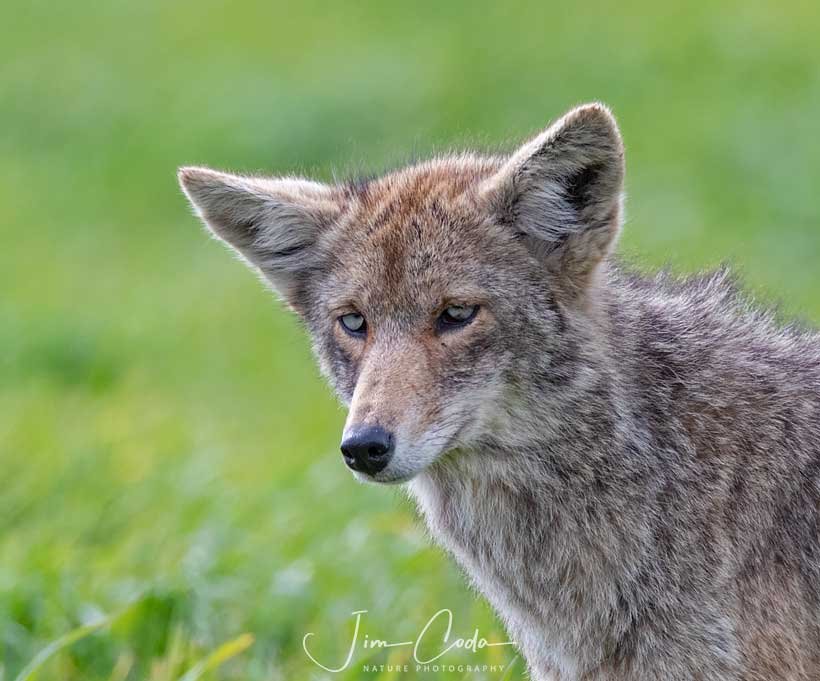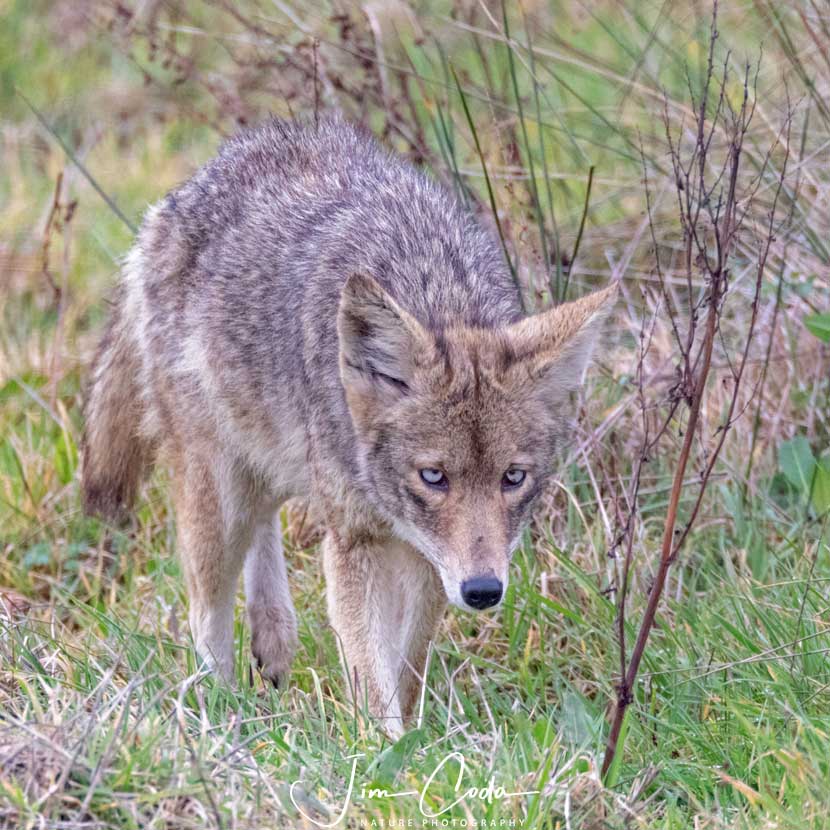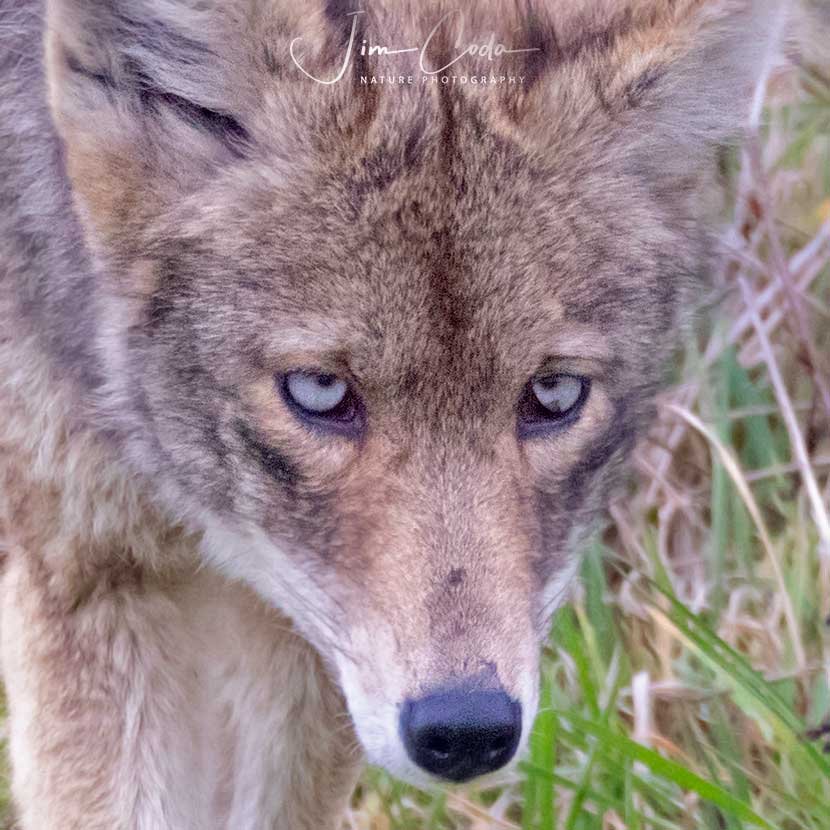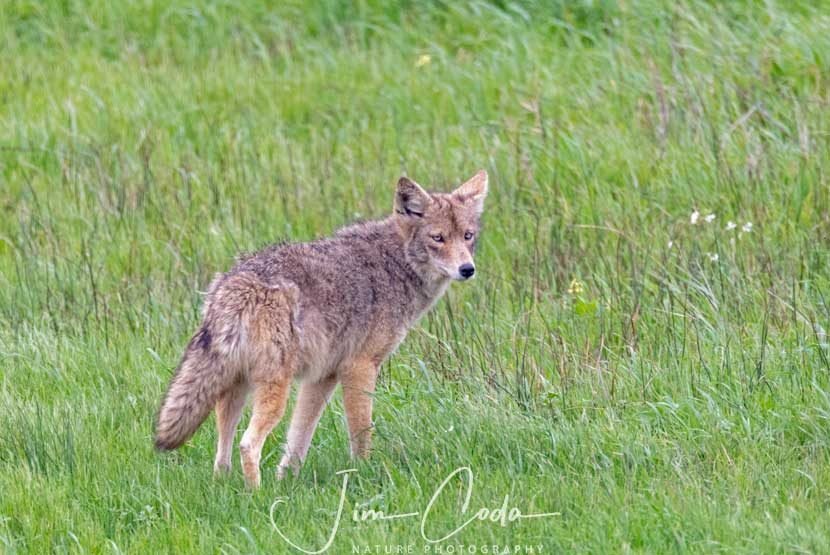Coyote, Point Reyes National Seashore
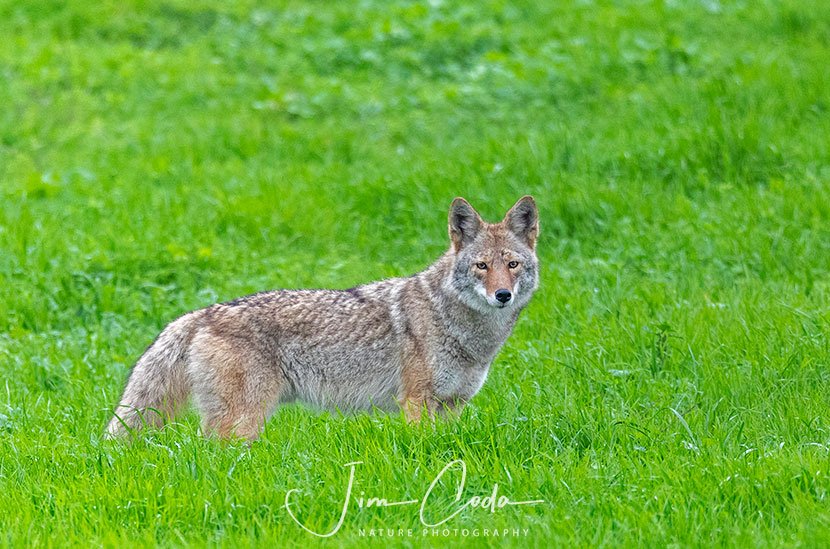
Coyote Standing in New, Green Grass
I was out at Point Reyes yesterday. It was a fairly good day wildlife photography-wise. I was able to photograph this coyote, a badger, a bobcat, some elk and some hawks. The coyotes look good right now with their new winter fur.
I prefer the winter and spring for photography at Point Reyes because the grass is green. Unfortunately, cattle ranching has converted the grasses from the native, perennial grasses that stayed green throughout the year to non-native, annual grasses that die each year when the winter/spring rains end and we go into our dry Mediterranean summer and fall when the place looks like a waste land.
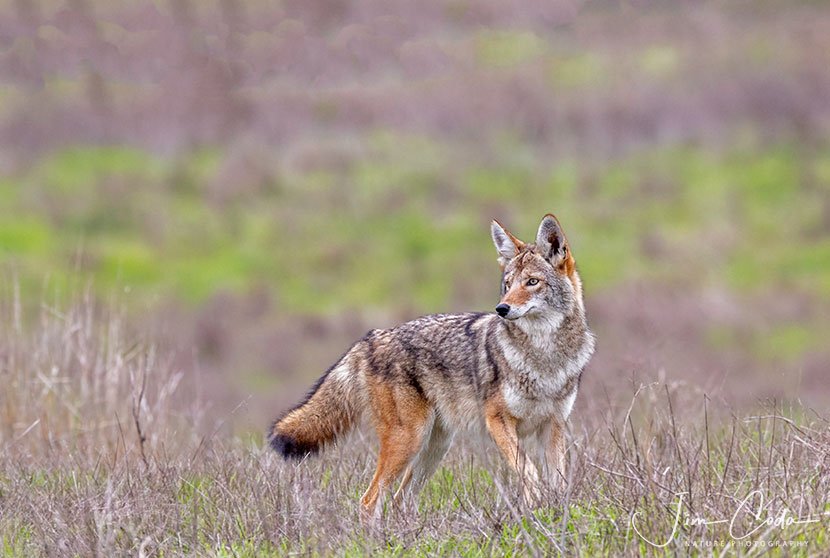
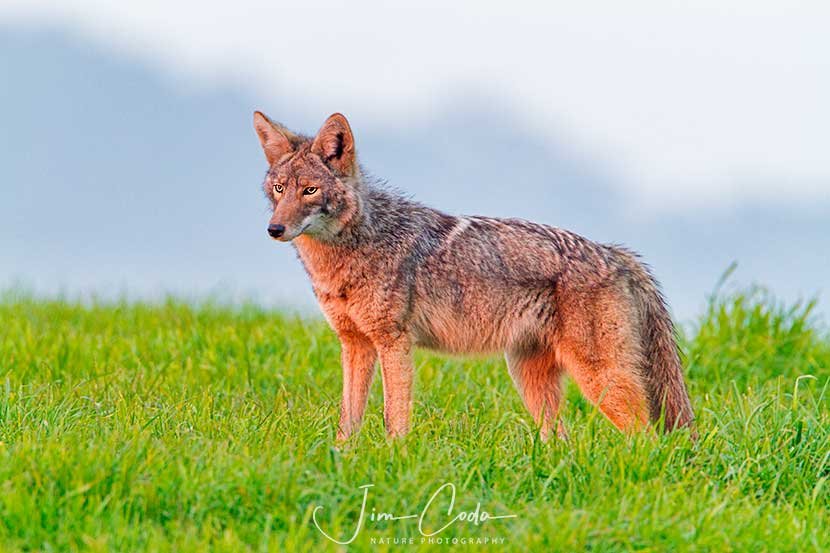
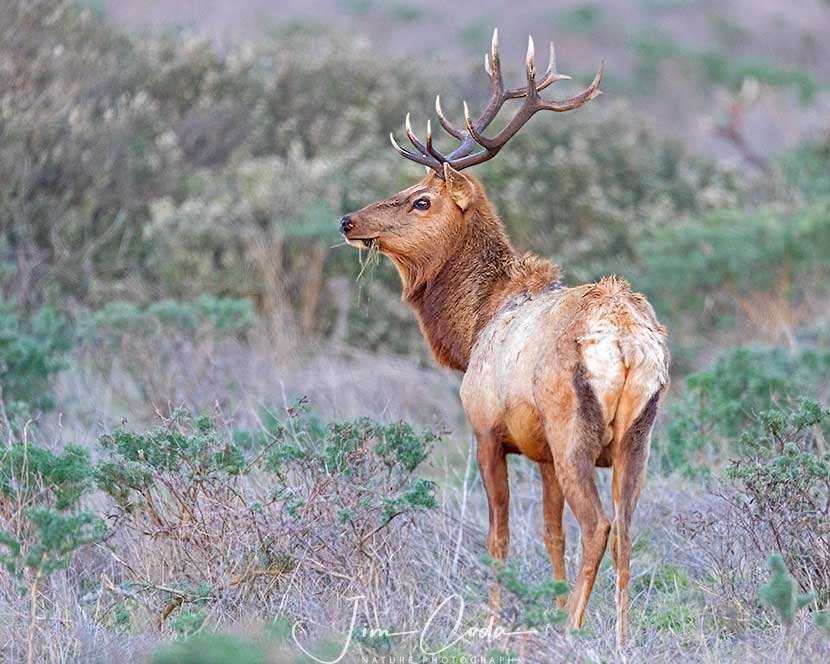 A bull tule elk feeds at sunset inside the elk enclosure at Point Reyes National Seashore.
A bull tule elk feeds at sunset inside the elk enclosure at Point Reyes National Seashore. A night view of Angel Island, Alcatraz and San Francisco.
A night view of Angel Island, Alcatraz and San Francisco.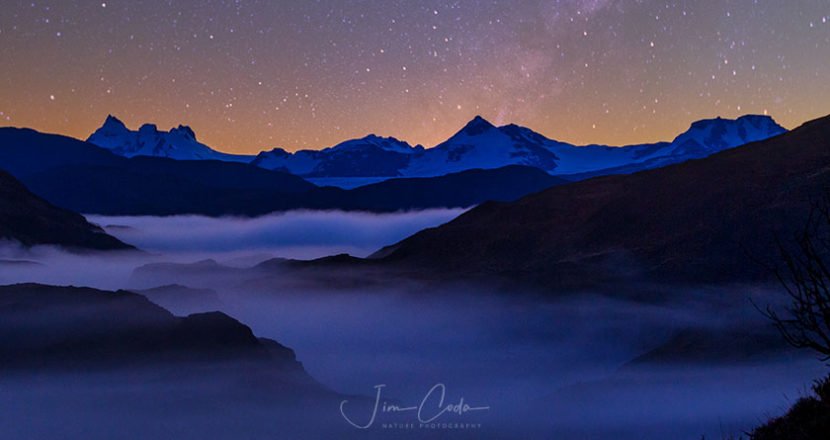 Mountains and fog at dawn in Torres del Paine National Park
Mountains and fog at dawn in Torres del Paine National Park A mother guanaco and her chulengo appear before sunrise in Torres del Paine National Park.
A mother guanaco and her chulengo appear before sunrise in Torres del Paine National Park.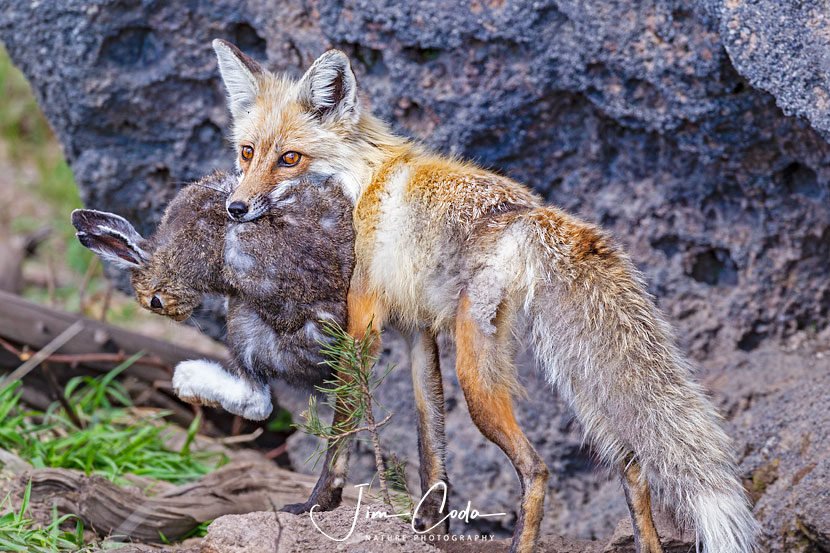 A red fox mom returns to her den with an arctic hare to feed her kits in Yellowstone National Park.
A red fox mom returns to her den with an arctic hare to feed her kits in Yellowstone National Park.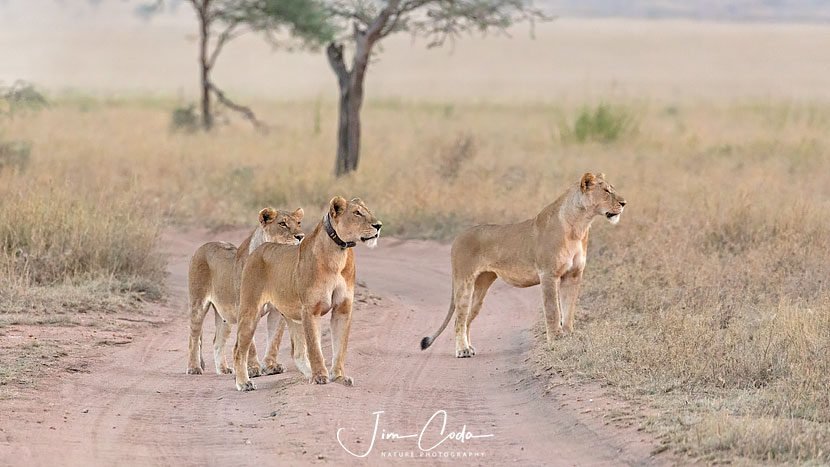 Three lionesses are on the hunt in Serengeti National Park.
Three lionesses are on the hunt in Serengeti National Park. A bald eagle perches on a limb in Alaska.
A bald eagle perches on a limb in Alaska.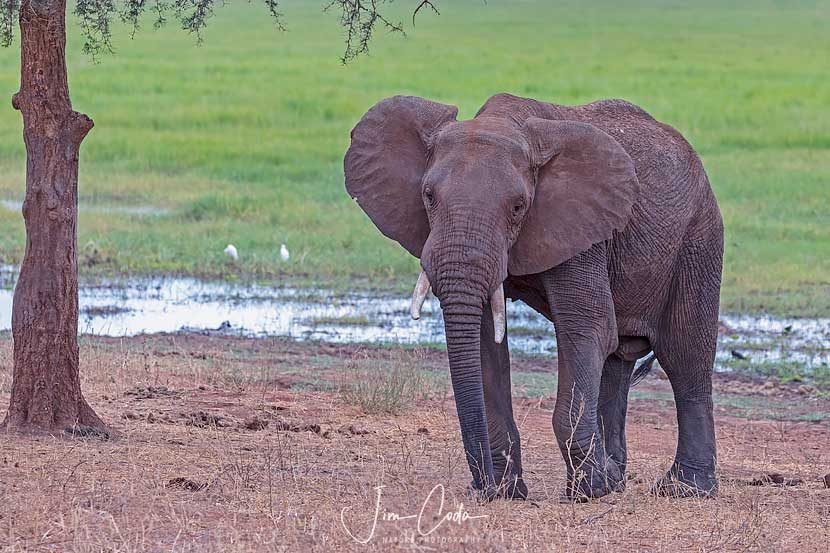 A male elephant walks near a wetland in Tarangire National Park, Tanzania.
A male elephant walks near a wetland in Tarangire National Park, Tanzania.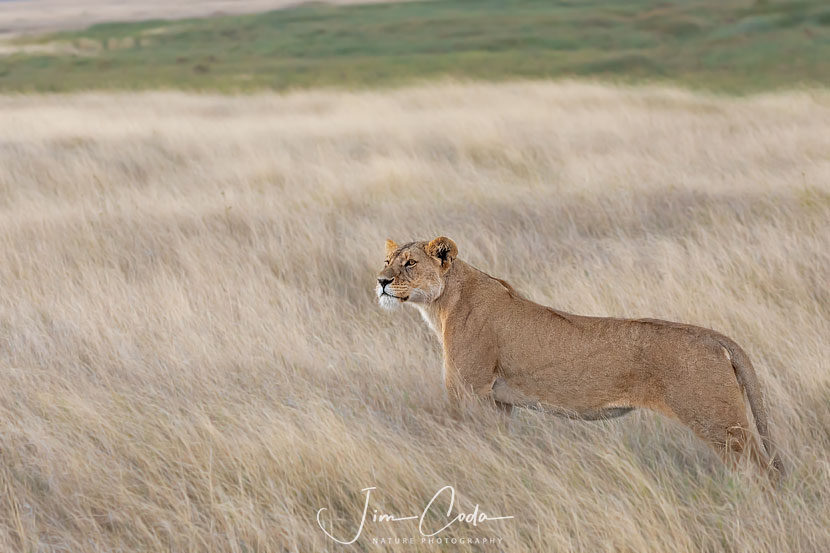 An African lioness surveys her domain in Serengeti National Park.
An African lioness surveys her domain in Serengeti National Park.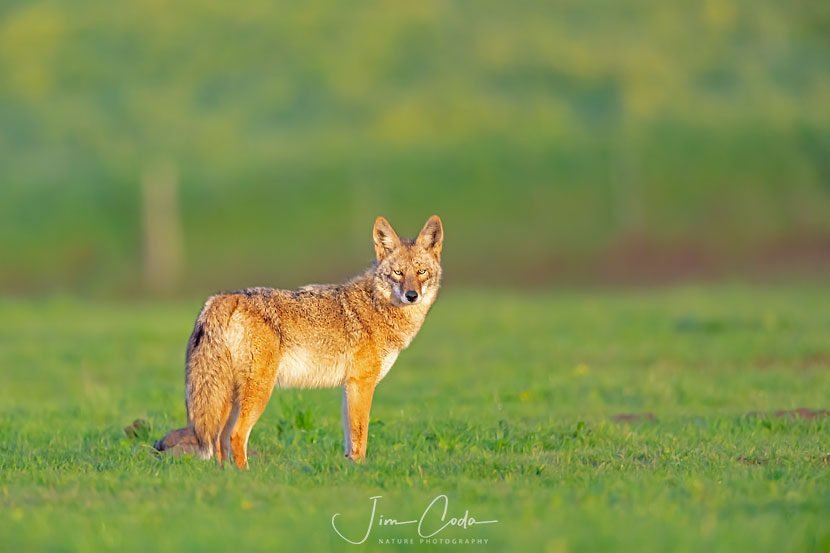 A coyote stops just before sunset as it travels across a ranch pasture in Point Reyes National Seashore.
A coyote stops just before sunset as it travels across a ranch pasture in Point Reyes National Seashore.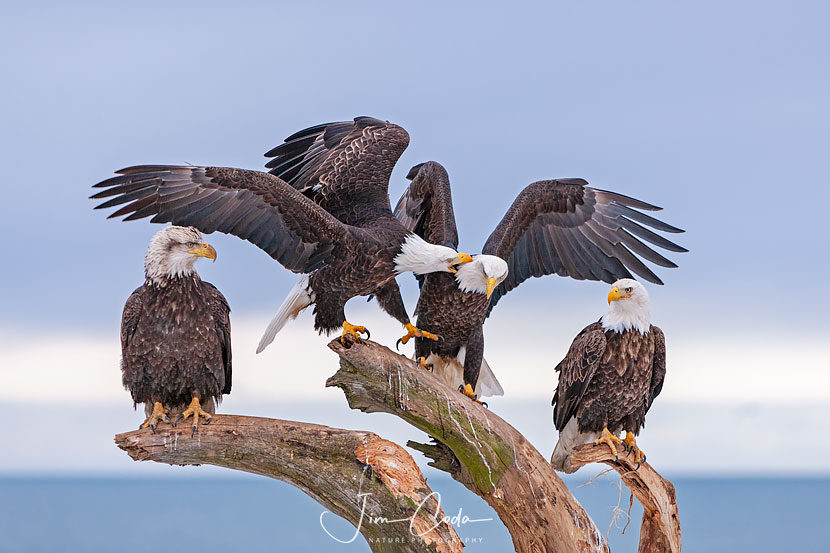 One bald eagle bites another at Homer, Alaska.
One bald eagle bites another at Homer, Alaska.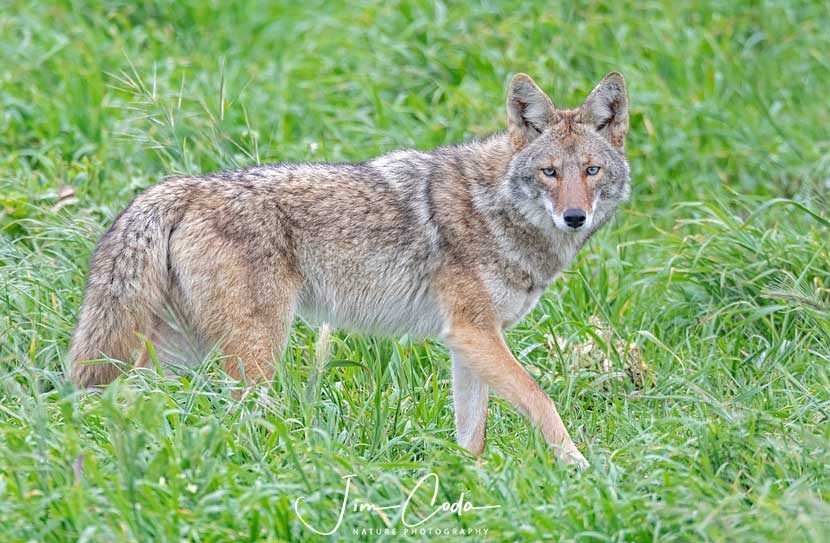 A coyote walks across a ranch pasture full of non-native European grasses in Point Reyes Seashore.
A coyote walks across a ranch pasture full of non-native European grasses in Point Reyes Seashore.